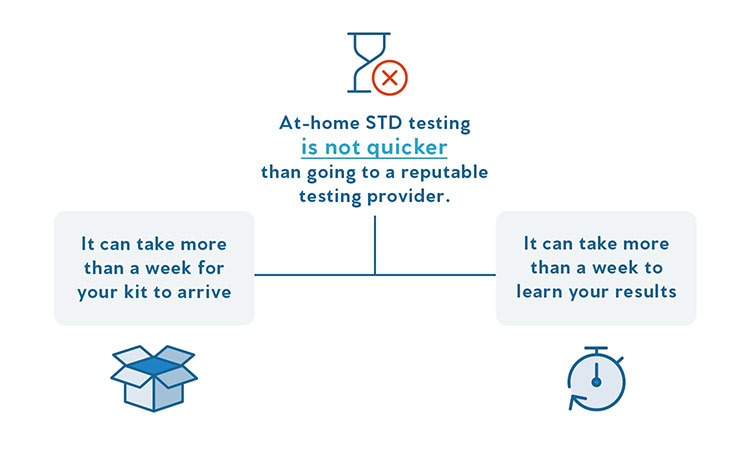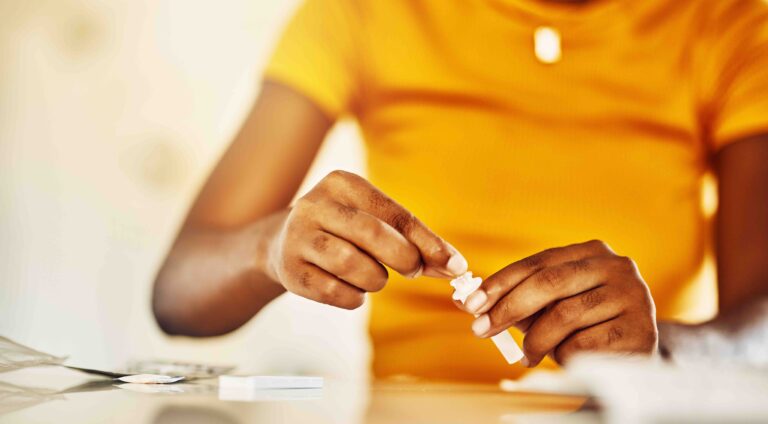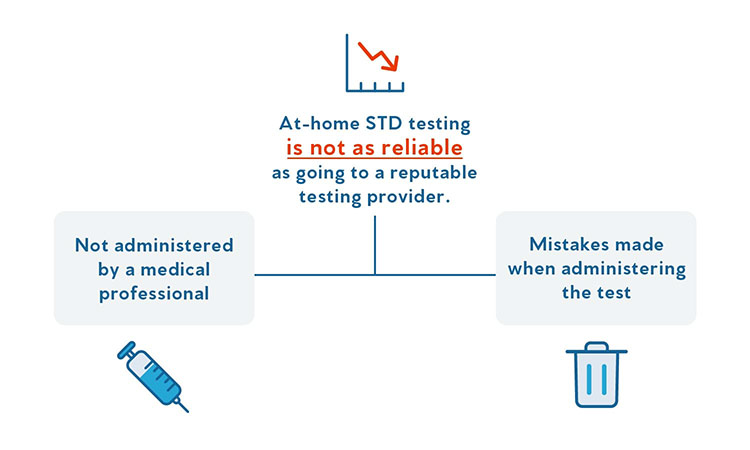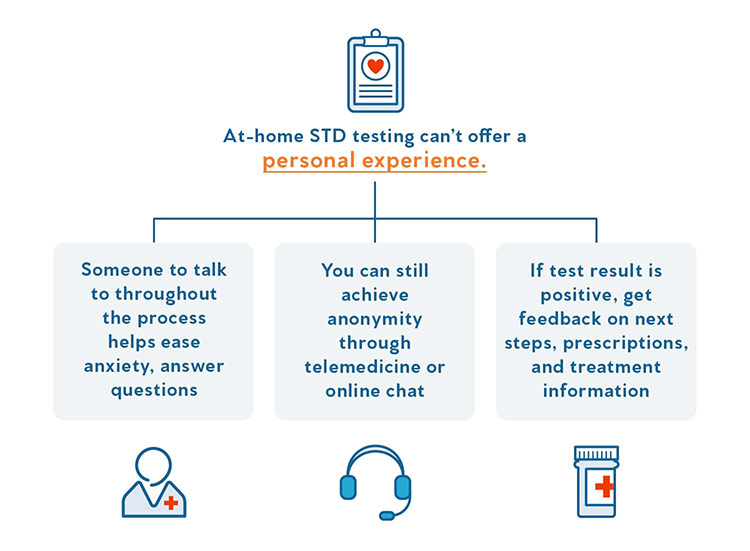People choose DIY tests for their privacy. But just how accurate are at-home STD tests? Let’s take a closer look.
How Accurate are At-Home STD Tests?
Most at-home STD tests claim to have an accuracy rate between 90-92%. While that might seem impressive at first glance, think about it this way—if you tested 25 people, odds are 2-3 of them would receive false results.
That’s far from “accurate.” STD test results are not meant to be interpreted in isolation. They are just one piece of the puzzle, and they should be evaluated by a medical professional in the context of your overall health and risk factors.
Common Issues When STD Testing at Home
We get it. STD testing at home feels convenient. But the bottom line is you’re better off just going to an STD testing center. Here’s why:
User Error
At-home STD test kits typically require you to collect a sample yourself, whether it’s pricking your finger for a blood sample, taking a genital swab, or providing a urine sample. While the instructions may seem straightforward, there’s always a risk of user error. Even a small mistake could lead to a false result, like not collecting enough blood or contaminating the sample.
When you go to a professional STD testing center, they collect the samples for you, minimizing the risk of errors that could compromise the accuracy of your results.
False Results
At-home STD tests provide inaccurate results—both false positives and false negatives—more frequently than tests conducted at a lab. This can be dangerous. If you receive a false negative, you might assume you’re STD-free and continue engaging in sexual activities, spreading the infection to your partners without realizing it. The wrong result also means you’re delaying treatment, which can lead to more serious health complications down the road.
While no test is perfect, going to a physical center provides a higher level of reliability. Their lab-based tests are more accurate and have quality control measures to minimize the risk of false results.
Advice on Next Steps
Let’s say you used an at-home STD test kit, and it came back positive. What now?
It’s natural to have questions about what to do next. Unfortunately, at-home test kits leave you without guidance on how to proceed. And even if you test positive, most doctors and pharmacies won’t prescribe medication solely based on the results of an at-home test. They’ll likely want to run their own tests to confirm the diagnosis before discussing treatment options.
When you get tested at an STD testing center, you have access to advice and support from the moment you receive your results. Medical professionals are on hand to discuss the implications, answer any questions, and walk you through the next steps, including treatment and partner notification.
Not as “Fast” as You Think
One of the main appeals of at-home STD tests is the promise of quick results. The reality is often not as speedy as you might expect. When you factor in the time it takes for the kit to arrive, for your sample to be mailed back, and for the lab to process your results, chances are you’ll be waiting several days (or even weeks) to get your results.

Priority STD testing provides results in as little as 24-48 hours. And for some STIs, you’ll even get same-day results. When it comes to something as important as your sexual health, the speed and reliability of professional testing can make a significant difference.
STD Testing, Made Easy
Looking for an accurate, hassle-free STD test? Turn to Priority STD Testing. Our online scheduling system makes booking an appointment a breeze—no more waiting for mail-in tests to arrive. Just fast, professional care when you need it most.



